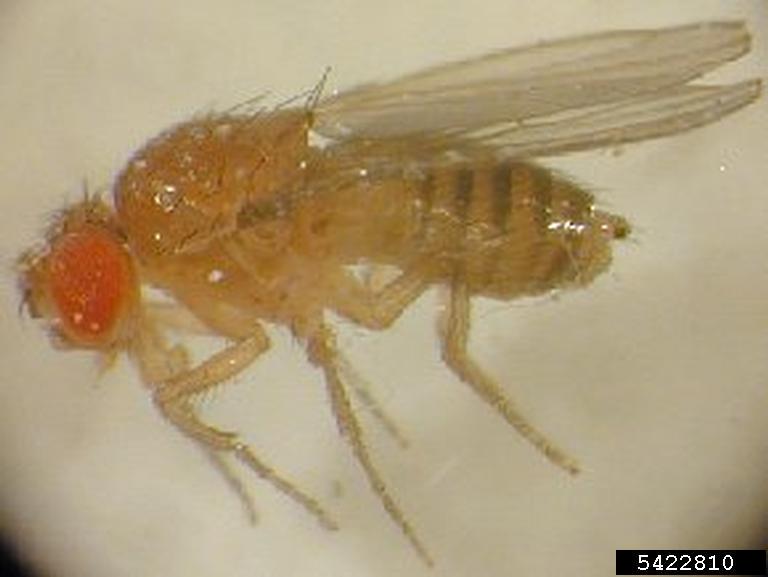Fruit Flies
Drosophila spp.
Identification
- small; 1/8 inch long
- bright red eyes
Nesting Habits
- eggs laid on ripe or overripe fruit, vegetables or decaying organic material
Diet
- ripened fruit, vegetables or decaying organic material
Significance
- nuisance indoors
- can transmit disease through contact
IPM Recommendations
- Keep exterior doors closed, install screen doors or install an automatic door closer, especially on doors leading into the kitchen.
- Exclude fly entry via caulking, weather stripping, door sweeps, screens, etc.
- Keep screens in good repair.
- Locate breeding susbstrate, if possible, and remove.
- Improve sanitation, especially with fruit and food material, soda cans (recycle), juice boxes, mop and broom heads and even floor drains.
- Keep dumpsters at least 50 feet from the building.
- Keep trash cans, dumpsters and garbage areas clean and free of odor.
- Close lids on dumpsters and garbage cans.
- Regularly clean floor drains.
- Vinegar traps or commercially produced fruit fly traps can catch flies that come indoors.




